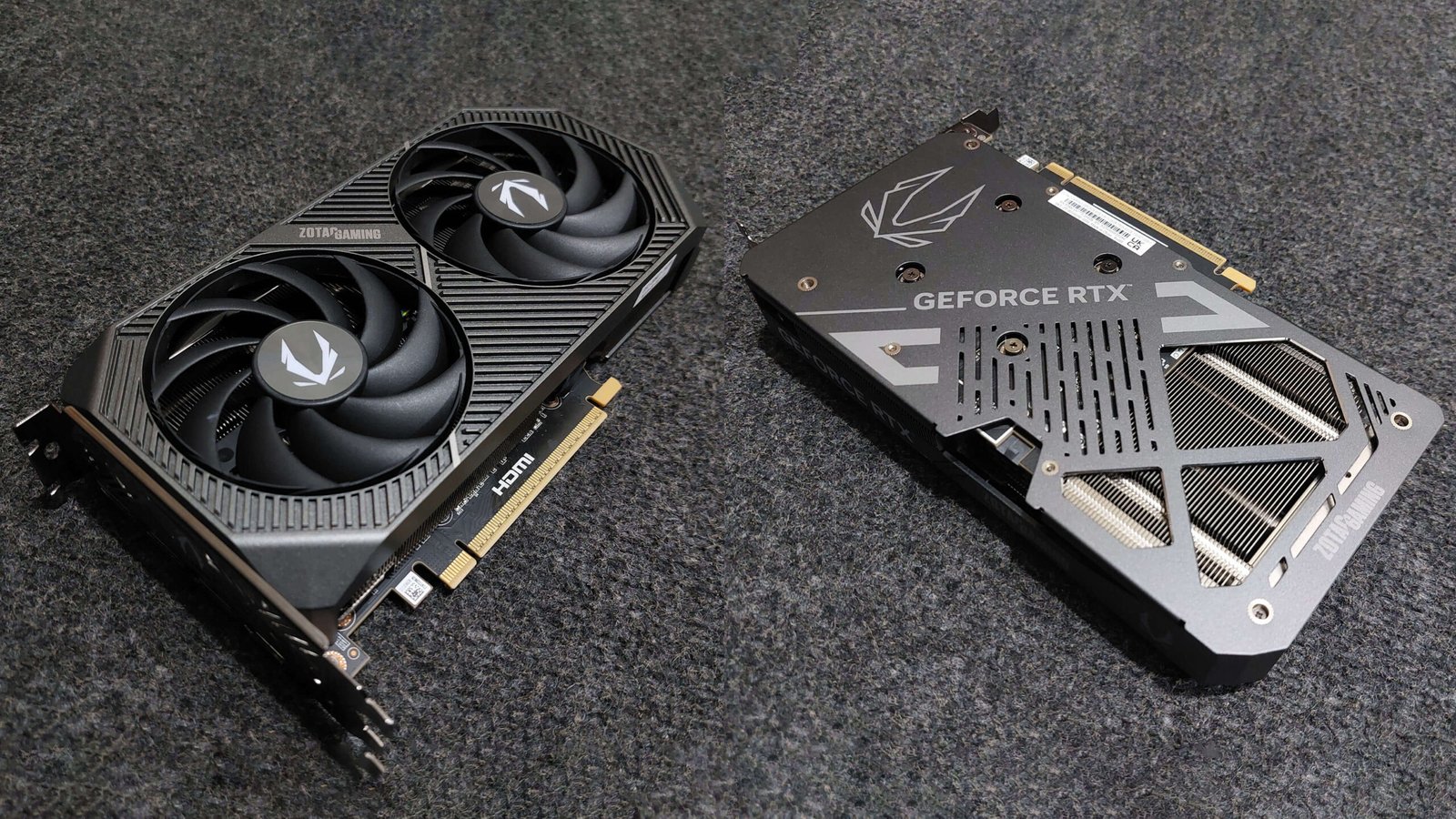丨Introduction
The NVIDIA GeForce RTX 5060 Ti 16GB is NVIDIA’s latest mid-range contender, promising solid performance for gamers chasing high frame rates and immersive visuals. At GAMING BENCH, we rigorously tested the Zotac Gaming RTX 5060 Ti Twin Edge across 25 games at 1080p, 1440p, and 4K, with a focus on rasterization and ray tracing performance using DLSS 4. Priced at $429 MSRP, how does it fare against competitors like the AMD RX 9060 XT, RX 7800 XT and NVIDIA RTX 4060 Ti? Let’s dive into the benchmarks, design, and our final verdict.
丨Testing System
We used a high-performance test setup to ensure accurate and consistent results. The system is powered by the AMD Ryzen 7 9800X3D running at 5.2GHz, known for its strong gaming and multitasking performance, paired with the ASRock X670E PG Lightning motherboard for solid stability and support for the latest technologies. We used 32GB of Corsair Vengeance DDR5 RAM at 6200MHz to avoid any memory bottlenecks during testing. To make sure the GPU runs without power limitations, we included a Corsair HX1000i 1000W fully modular PSU. This setup ensures that the RTX 5060 Ti can perform at its full potential, giving us clear insights into its capabilities in gaming, creative tasks, and synthetic benchmarks.
丨25 Games Benchmarks
To evaluate the real-world performance of the Zotac Gaming RTX 5060 Ti 16GB GDDR7 Twin Edge, we tested a total of 25 modern and demanding games across three native resolutions: 1080p, 1440p, and 4K. This gave us a clear picture of how the GPU handles different workloads, from high-refresh competitive titles to visually intense AAA games. We also tested ray tracing performance with DLSS 4 enabled, allowing us to see how well the card balances visual quality and frame rates using NVIDIA’s latest AI upscaling technology. These tests provide a complete view of the RTX 5060 Ti’s capabilities in both raw rasterization performance and real-time ray tracing scenarios.
1080P Performance
The RTX 5060 Ti delivers smooth frame rates at 1080p for most titles without upscaling, aligning with our preference to avoid DLSS at this resolution (no frame generation used). Tests were conducted mostly at maximum graphics settings, though some demanding games required reduced settings to maintain performance:
- Alan Wake 2
- Black Myth: Wukong
- Monster Hunter Wilds
- Assassin’s Creed Shadows
1440p Performance
At 1440p, the RTX 5060 Ti shines with DLSS 4, which is essential for maintaining playable frame rates in graphically intensive games tested at maximum settings. Titles requiring DLSS include:
- STALKER 2
- Alan Wake 2
- Assassin’s Creed Shadows (RT forced)
- Clair Obscur: Expedition 33
- God of War Ragnarök (hot areas), Better Performance in Cold Area in Game.
- Hellblade II
- Kingdom Come: Deliverance II
- The Last of Us Part I
- The Elder Scrolls IV: Oblivion Remastered
- Silent Hill 2 Remake
- Monster Hunter Wilds
4K Performance
The RTX 5060 Ti isn’t designed for 4K gaming but can handle select titles with DLSS 4 (Quality, Balanced, or Performance) and frame generation, tested at maximum graphics settings. Playable games at 4K max settings include:
- Cyberpunk 2077 (DLSS Performance)
- STALKER 2 (DLSS Performance + frame gen)
- The Last of Us Part II (DLSS Quality)
- Ghost of Tsushima (DLSS Balanced)
- God of War (DLSS Quality)
- God of War Ragnarök (DLSS Performance)
- Horizon Forbidden West (DLSS Balanced)
- Indiana Jones and the Great Circle (DLSS Performance)
- Red Dead Redemption 2 (DLSS Quality)
- Silent Hill 2 (DLSS Performance)
- The Finals (DLSS Balanced)
Ray Tracing + DLSS 4 Performance
NVIDIA’s focus on ray tracing continues with the RTX 5060 Ti, but results are mixed. While DLSS 4 and Multi Frame Generation (MFG) boost frame rates significantly with 4X frame generation—but frame generation introduces minor quality losses and acceptable latency for single-player titles but it is unsuitable for online esports games. The 16GB VRAM proves its worth, handling high-resolution textures and ray-traced effects with ease.
丨RTX 5060 Ti vs _ _ _
For this review, we compared the RTX 5060 Ti against three key competitors: the RTX 4060 Ti, the AMD’s RX 7800 XT and the RX 9060 XT tested across all three native resolutions—1080p, 1440p, and 4K. However, since the RTX 5060 Ti is primarily targeted as a 1440p gaming GPU, we’ve focused on presenting the 1440p benchmark results in this article. For a full breakdown across all resolutions and with DLSS and ray tracing included, you can check out our detailed comparison video on YouTube.
RTX 4060 Ti vs RTX 5060 Ti
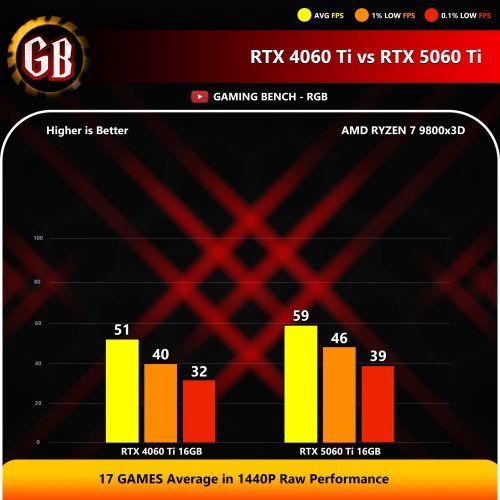
At 1440p, the RTX 5060 Ti delivers a solid performance boost over its predecessor, the RTX 4060 Ti. Across 17 tested games, the 5060 Ti averaged 59.2 FPS, compared to 51 FPS on the 4060 Ti—a 16.08% improvement in raw performance. Despite this uplift, the RTX 5060 Ti comes in with a lower MSRP of $429, undercutting the 4060 Ti’s $499 launch price. This not only makes it a faster card but also a better value for gamers targeting 1440p gameplay.
RTX 5060 Ti vs RX 7800 XT
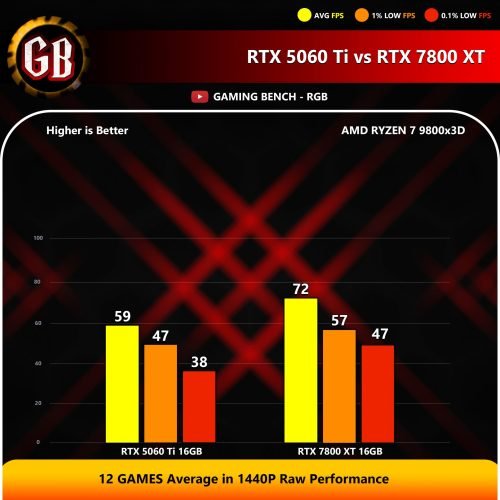
In our 1440p testing across 12 demanding titles, the AMD RX 7800 XT delivered an average of 72.75 FPS, while the RTX 5060 Ti averaged 59.83 FPS. This puts the RX 7800 XT ahead by roughly 21.59% in raw rasterization performance. However, it’s important to note that the RX 7800 XT comes with a higher MSRP of $499, compared to the RTX 5060 Ti’s $429. While AMD clearly leads in pure frame rates, NVIDIA’s advantage lies in its advanced features—DLSS 4 significantly boosts performance in supported titles, and ray tracing is generally better optimized on the RTX 5060 Ti.
RX 9060 XT vs RTX 5060 Ti

In a head-to-head comparison across 19 modern games at 1440p focusing solely on rasterization performance, the AMD RX 9060 XT and NVIDIA RTX 5060 Ti deliver an extremely close battle. The RX 9060 XT edges out with wins in 10 titles, while the 5060 Ti claims 9, yet the RTX card slightly leads in overall average frame rate—63 FPS versus 62 FPS. Despite this razor-thin performance difference, the RX 9060 XT stands out in terms of value, launching at a lower MSRP of $349 compared to the 5060 Ti’s $429. While AMD’s card typically draws more power and uses more VRAM, it delivers competitive performance at a more affordable price point, making it a compelling option for value-conscious gamers.
丨Design and Thermals
The Zotac Gaming Twin Edge sports a sleek “chocolate” design with impressive build quality and a well-engineered backplate for cooling. Check out the box and GPU below to see its compact, stylish form—though it lacks RGB lighting, which we missed. Key thermal and power metrics:
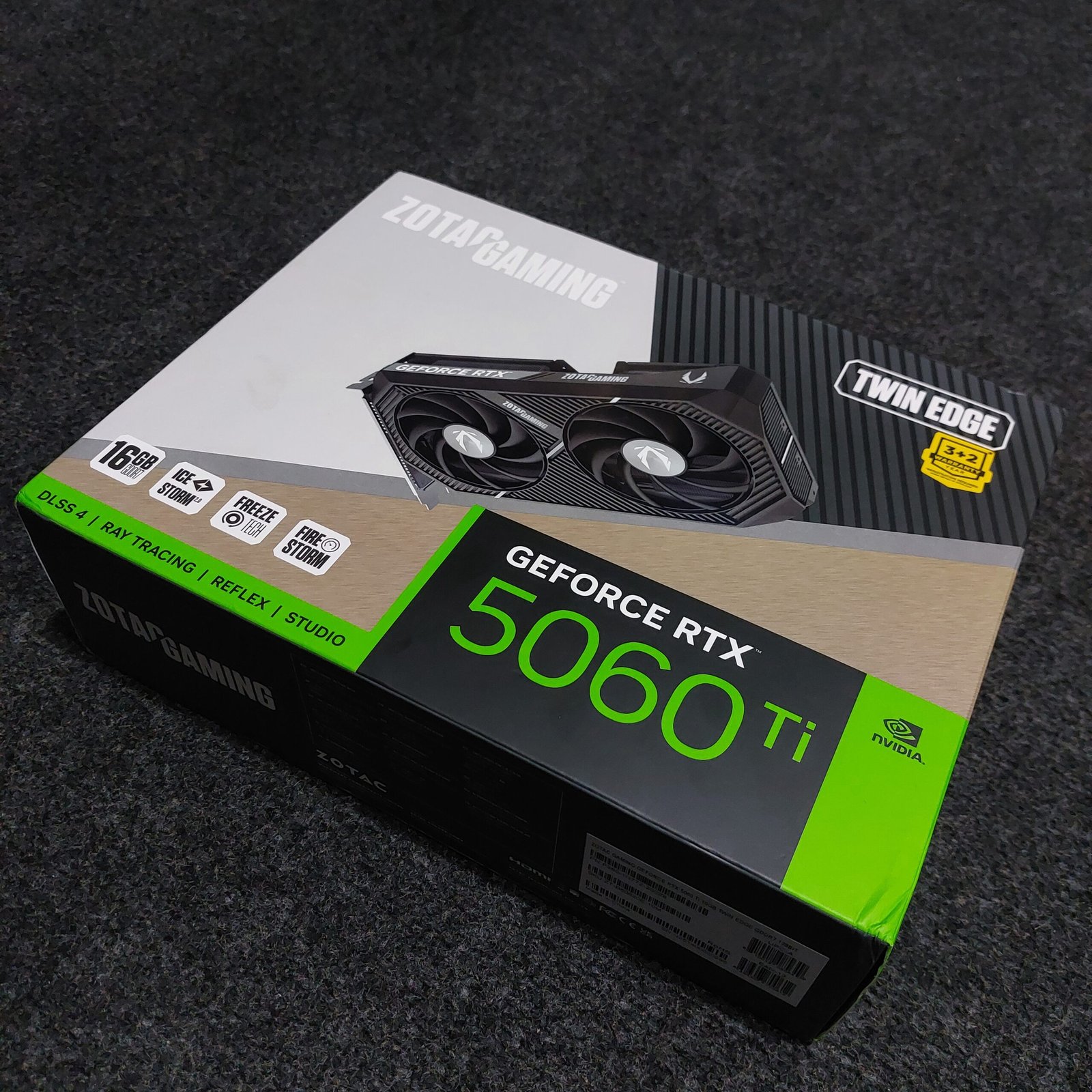
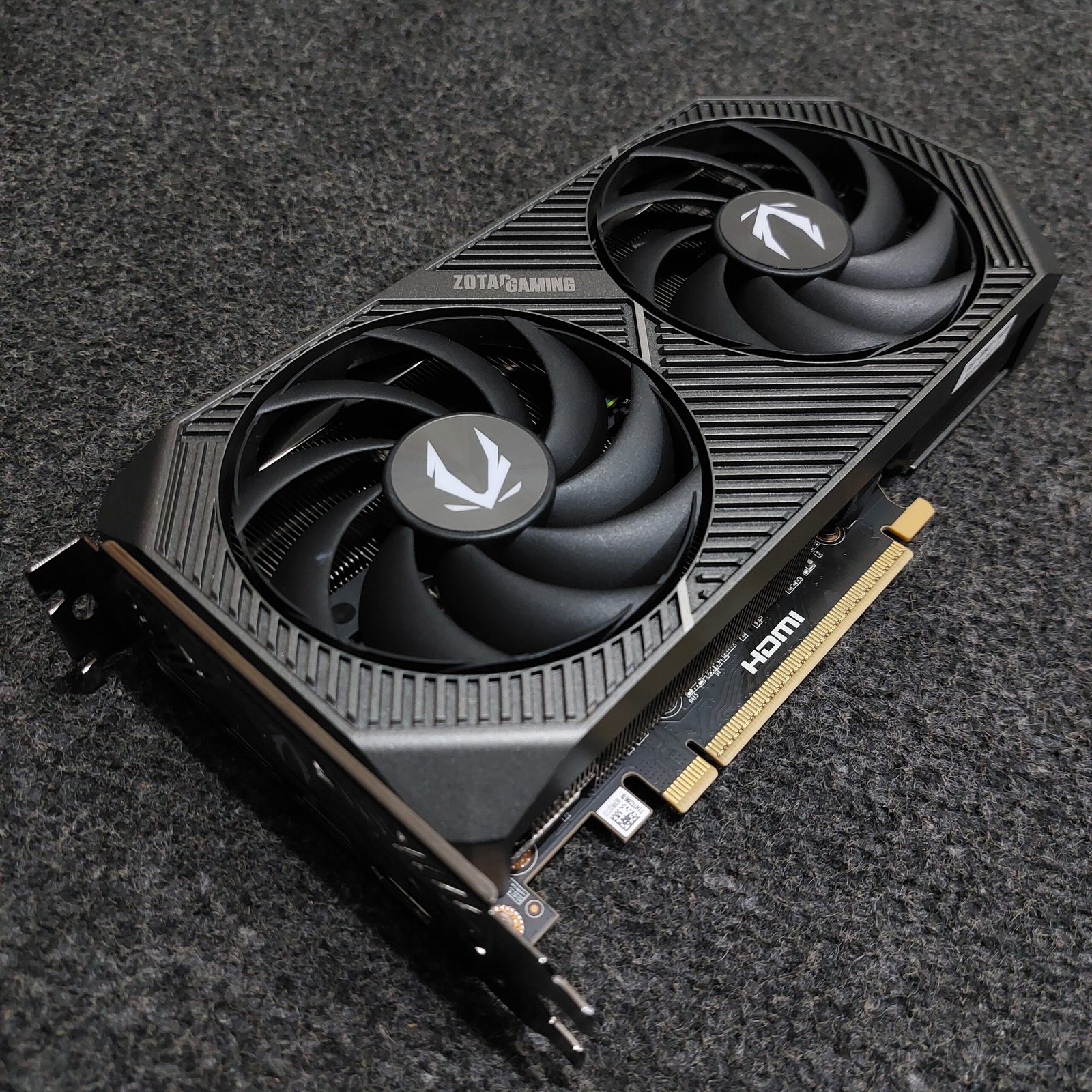
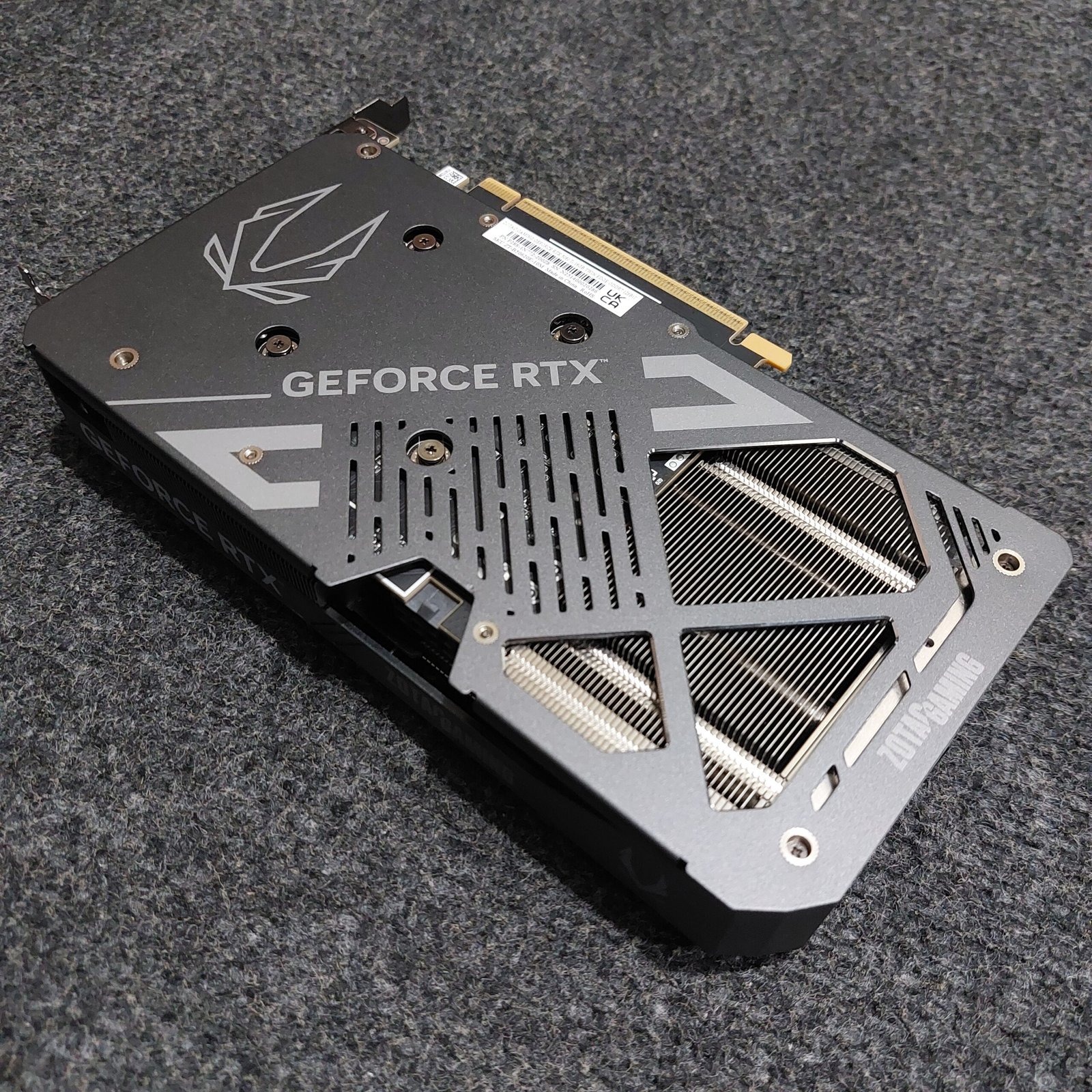
- Fan Speeds: Stayed under 1700 RPM during testing, reaching 3516 RPM at 100% via MSI Afterburner.
- Temperatures: Mostly under 65°C, peaking at 67°C in Indiana Jones and the Great Circle (room temp: 25–30°C, open case).
- Power Consumption: Under 165W across 25 games, showcasing efficiency.
Features and Technology
- DLSS 4: NVIDIA’s latest upscaling tech is a game-changer, boosting performance at 1440p and 4K with minimal visual trade-offs.
- Ray Tracing: Strong for a mid-range GPU, enhanced by DLSS 4 for immersive lighting and reflections.
- 16GB GDDR7 VRAM: Future-proof for modern titles, supporting high-res textures and multitasking.
丨Ratings
Performance: Strong 1440p performance with DLSS 4 and 16GB VRAM, but RX 9060 XT similar in rasterization.
Value for Money: Competitive at $429 MSRP, though the RX 9060 XT offers better value at $349 with similar performance.
Features: DLSS 4 and 16GB VRAM excel for RT and upscaling but frame generation not recommended for online games.
Design and Thermals: Sleek, efficient, and cool, but no RGB.
丨Conclusion
The NVIDIA GeForce RTX 5060 Ti 16GB is a compelling choice for 1080p and 1440p gamers, with DLSS 4 and 16GB VRAM ensuring longevity. While the AMD RX 9060 XT leads in Value for money with similar Rasterization performance, the RTX 5060 Ti’s ray tracing and upscaling prowess make it a strong contender for NVIDIA fans. The Zotac Gaming Twin Edge impresses with its design and thermals, though RGB would’ve been a bonus. For Quick benchmarks and reviews, subscribe to GAMING BENCH and GAMING BENCH – RGB on YouTube.
What’s your take on the RTX 5060 Ti? Drop your thoughts in the comments!

